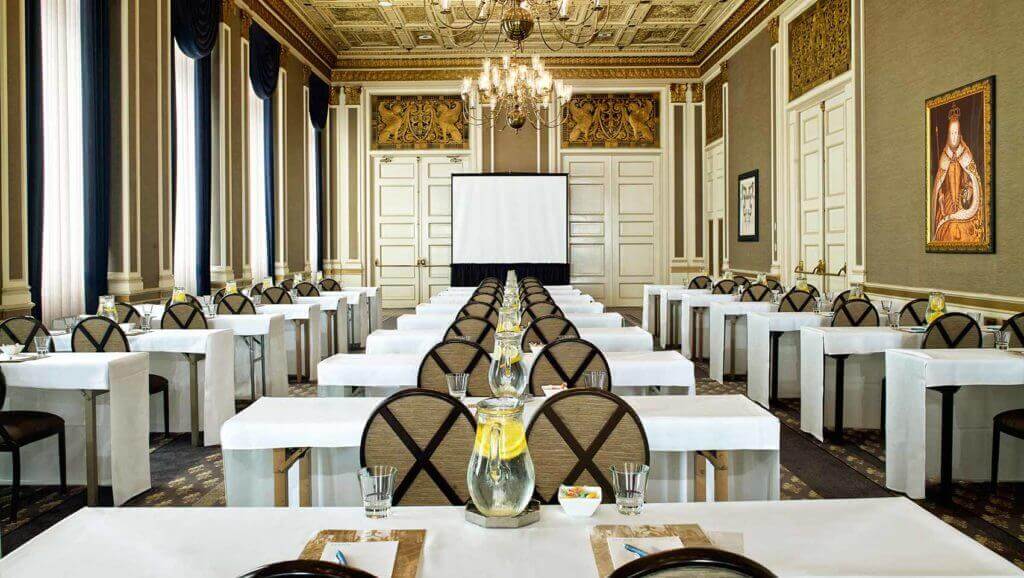
How many times in your career have you been asked to think outside the proverbial box? “Think differently” comes the mandate from above, but it’s easier said than done.
NB: This is an article from IDeaS
We are, after all, stuck with the brains our parents gave us. How will you change? You could embark on a mythical quest to forage wild mushrooms and find your power animal, hoping that gets the synapses firing in a new way, or you could look to some tried-and-true methods of thinking you haven’t applied before.
A paradigm shift of thought is under way in the meetings and events (M&E) industry. Progressive hoteliers, event-center managers, and other hospitality leaders have seen the light and have explored dynamic-pricing strategies and analytics technology to optimize the profitability of their function space. Revenue-management practices have proven successful for travel and hospitality segments like airline ticketing and hotel rooms, and now they’ve been refined and tailored for M&E. So, get ready to expand your mind—and your profit margins—with these revenue-management insider tips, tricks, and tools for your M&E business.
It’s an Art…It’s a Science…It’s Revenue Management!
Peter Drucker, recognized worldwide as the founder of modern management, famously said, “If you can’t measure it, you can’t improve it.” So, how do you measure the value of your event space? If you’re in the hotel business, for instance, you’re likely laser-focused on your guest-room performance, but your M&E rooms shouldn’t be disregarded. What percentage of your total revenue comes from your function rooms? With the right processes in place, some hotels have managed to maximize their M&E performance to generate 40, 50, even 60 percent, making it their largest revenue stream.
The main barrier to reaching these high levels of profitability often comes from an inability to accurately and efficiently measure meetings and events performance and make better-informed choices. Hence, we fall back on making event-booking and pricing decisions based on gut feelings and guesstimates, or even worse—a first-come, first-served basis.
Take it from revenue-management pioneer and IDeaS’ president, founder and chief scientist Dr. Ravi Mehrotra who said, “To have confidence in your forecast, you must start with a scientific understanding of available true demand. You must evolve beyond a culture that largely depends on trial and error to a culture that is much more objective by combining the power of data, advanced mathematics, and technology.”
Smart revenue management starts with replacing instinct with facts and supplanting guesswork with well-informed predictions. Track demand and capture all inquiries, day by day, including turned-down and lost business. Set minimum occupancy thresholds, and on your high-demand days, hold out for higher delegate numbers. Then measure your performance. Did you reach your goals? Were your forecasts accurate? Did you miss out on any high-value opportunities?
These measurements will help drive the success of your future M&E business, but you won’t be able to go it alone. Change is hard – leading an organization-wide change-management initiative is like herding cats…in the middle of a monsoon. Start at the top and work your way down. Holistic alignment begins with a unified leadership team. Convince your company’s stakeholders to agree a new M&E strategy is just the thing to increase your total revenue performance.
Once you have executive buy-in, you can enlist their help in driving cross-collaboration between departments like sales, marketing, catering, revenue management, and more. Establish key performance indicators like revenue per square foot, attendee density, and revenue per attendee, and create educational materials and training sessions to help your teams learn to manage function-space inventory in a scientific and methodological way.
Big Data? No Problem.
Data begets knowledge which incites strategic activity, but as the name “big data” implies, there’s a lot of it. Your time is valuable, and you were meant to do more than manage spreadsheets. Fortunately, automated revenue-management technology has vastly changed revenue operations, one industry at a time, and meetings and events is ready for its close-up.
Revenue-optimization technology for meetings and events allows users to quickly and easily track inquiry trends, forecast demand, set optimized rates, measure performance, report findings, and identify new opportunities for business, all in one place, and at a far more detailed and scientific level than even the smartest revenue manager with a color-coded spreadsheet could ever achieve alone.
We’ve grown accustomed to an alarming lack of available good data for tracking M&E business trends. But now, increased access to data that was previously difficult to get has revolutionized the understanding of business opportunities and allowed for a much more sophisticated selling strategy, raising the focus on meetings management and enabling smarter decision-making and greater profits for the hospitality industry.
The M&E industry in hotels and beyond is undergoing a powerful metamorphosis, and hoteliers have finally recognized function space as more than just a guest-room filler. Now is the time to change your mind—and your organizational culture—to think outside the guest room because magic mushrooms are no match for deep machine learning, and the powers of the fox just don’t generate profits like a well-executed revenue-management strategy.




